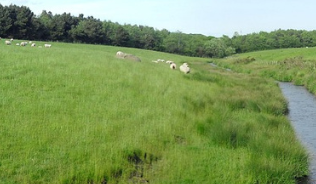Today (February 16th) is Kyoto Protocol Day, which commemorates the Protocol coming into force. In turn, it is an opportunity to reflect on the history of climate science during a time when the lessons with which we are now all-too familiar were still entering the mainstream of public understanding and acceptance.
On the 18th anniversary of the Kyoto Protocol’s effective birth, the IES is marking that coming-of-age by thinking about the lessons Kyoto taught us for how we communicate science, the ways we can build coalitions, and what it means for the future of environmental science and how it engages with the public, in the context of interlinking global crises and the urgent need for science-led action on climate change.
Good policy demands good implementation
Kyoto ultimately failed because its enforcement method was unable to realise the ambition of lowering global greenhouse emissions. The relationship between the Kyoto Protocol and the controversial system of ‘cap and trade’ effectively led to a scenario where emissions continued in earnest, partly because of limited means to ensure compliance, and partly because the ability to trade away action on climate change for a cost made it appear that urgent action to address emissions was not necessary for all countries or organisations.
The lesson we can learn is simple: no matter how strong our commitments are, we must ensure that they are realised through coherent and effective implementation.
- We must go beyond words, and ensure effective action;
- We must ensure our plans for implementation actually lead to the kinds of change we want to promote;
- We must recognise the complex economic, social, and natural systems linked to policy implementation, to avoid unintended consequences.
It’s not always easy
Where the Kyoto Protocol was initially seen as a significantly important step in the fight against climate change, its failure to produce the necessary reduction in emissions was seen as a failure of global cooperation on environmental issues. Where the Montreal Protocol had already begun to succeed in addressing the depletion of the ozone layer, Kyoto had not addressed climate change in the same way.
However, even despite those initial challenges, significant progress has now been made towards mitigating climate change, and we may have reason for conditional optimism that we may still be able to limit global rises in temperature. It seems clear that such progress would not have been possible without Kyoto, even if the Protocol itself failed to deliver on its goals. We should remember that every failure on the path to tackling climate change may contribute to getting us closer to a long-lasting solution.
- We must realise the scale of the challenge ahead of us, and not presume success to be easy without taking the steps we need;
- We must stay conditionally optimistic, recognising that we can achieve long-term solutions even as we face challenges along the way.
We need carrots and sticks in equal measure
Kyoto provides us with lessons for science communication as much as it does for policy. The rhetoric around Kyoto and the overall pursuit of climate action at the time, was heavily premised on the duty to address climate change and the negative consequences of not doing enough. Such negativity has been linked to a failure to motivate action: both from the ‘free riders’ who believed others would pick up the burden of action for them, and from the ‘doomers’ who became too apathetic to act.
In 2015, Paris took a different tone: climate action is an opportunity, and the first movers will be the ones who reap the rewards of the inevitable transition. Now, businesses and countries around the world are much more engaged in climate action, and one of the key reasons seems to be the messaging around climate change, and the potential for benefits as well as burdens.
- We must ensure that our science communication recognises the rewards of climate action, not just the harms of inaction;
- We must have positive competition mechanisms involved in our global climate frameworks, rather than purely punitive measures;
- We must use all means of pursuing action on climate change, including both ‘carrots’ and ‘sticks’.
You need to visualise the insurmountable to address it
When the Kyoto Protocol was signed and ratified, the world’s view of climate change was entirely different. For many, the concept was alien to them, or was at the very most ‘an inconvenient truth’, rather than the real and omnipresent threat that it is today. Understanding the reality of climate change is fundamental to the ways that humanity seeks to address it. When we could not visualise what it meant, it was harder for people around the world to see why they should act to prevent it, or to adapt to its consequences.
Equally, we must be able to visualise a positive future beyond climate action. The lesson we learned from Kyoto was that visualising the challenge could help to motivate us, but we cannot make the mistake of thinking that action will become widespread without a positive vision for the kind of world we want to create, and how climate action can create that world.
- We must articulate the positive vision of the future we want to create;
- We must use science to realistically convey the risks of climate change and the opportunities of climate action to decision makers and the general public.
The future
Over 18 years, we have learned many lessons about how climate science and policy can work together to create global governance that helps to increase positive action on climate change. The climate is in a much worse place than it was when Kyoto was ratified, but the science is now much stronger, and the policy levers we have for action are more effective.
The world has grown up to its environmental obligations and the need to create a world which addresses the causes of climate change. In that world, environmental science must continue to play a crucial role. As it does so, we must keep learning the lessons of climate change and the ways that Kyoto, Paris, Glasgow, and every other step in that journey can help to improve our policy, our science, and the ways that we communicate.
This article is part of our Future of ES23 horizon scanning & foresight project on the future of the environmental sciences. Find out more about the project and how you can get involved. If you want to support the work of the IES to shape the future of the environmental sciences, you can join as an affiliate, or if you’re a professional in the environmental sector working with science, consider becoming a member of the IES.





